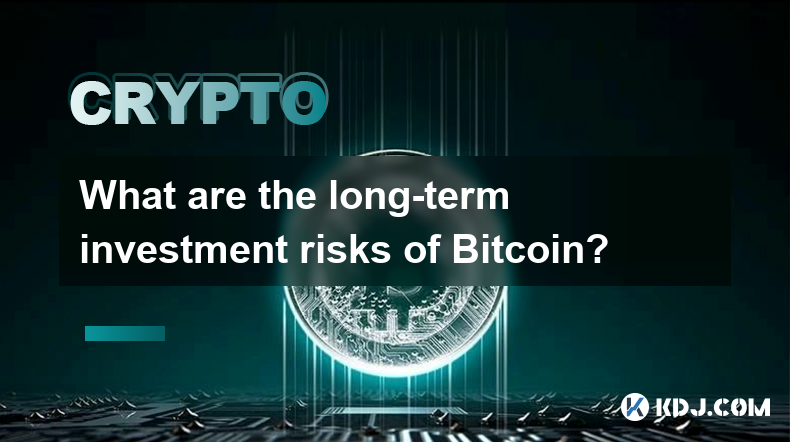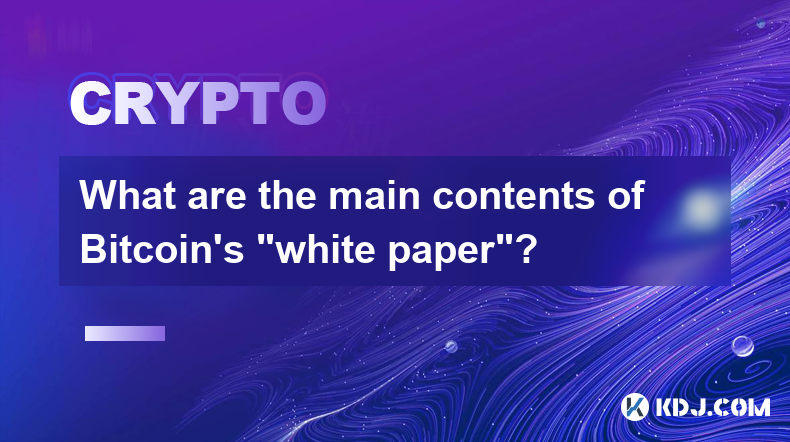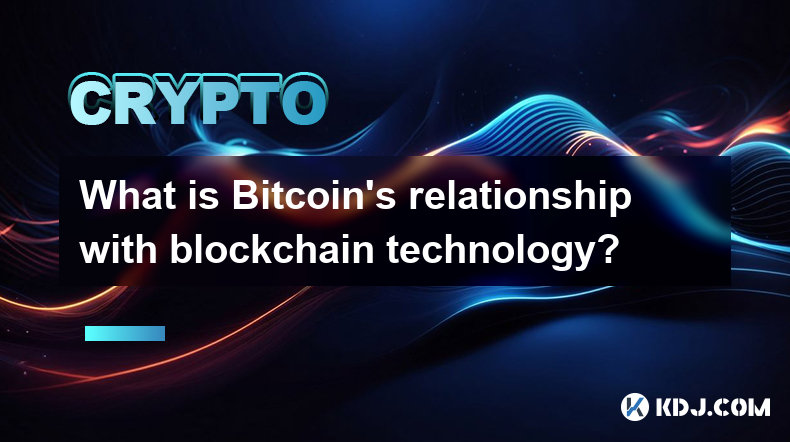-
 Bitcoin
Bitcoin $96,640.2391
-1.65% -
 Ethereum
Ethereum $2,774.9044
1.56% -
 XRP
XRP $2.5935
-0.94% -
 Tether USDt
Tether USDt $1.0000
-0.01% -
 BNB
BNB $661.2079
0.74% -
 Solana
Solana $173.1228
-0.78% -
 USDC
USDC $1.0000
0.02% -
 Dogecoin
Dogecoin $0.2460
-2.67% -
 Cardano
Cardano $0.7730
-3.13% -
 TRON
TRON $0.2359
-2.98% -
 Chainlink
Chainlink $17.8332
-2.31% -
 Avalanche
Avalanche $25.7255
1.25% -
 Sui
Sui $3.4300
-0.19% -
 Stellar
Stellar $0.3347
-0.39% -
 Litecoin
Litecoin $128.4555
-3.57% -
 Toncoin
Toncoin $3.6770
-0.21% -
 Shiba Inu
Shiba Inu $0.0...01556
-0.53% -
 Hedera
Hedera $0.2180
-0.53% -
 UNUS SED LEO
UNUS SED LEO $9.6924
-0.40% -
 Hyperliquid
Hyperliquid $24.6648
-2.80% -
 Polkadot
Polkadot $5.0984
-2.54% -
 MANTRA
MANTRA $7.5025
-0.29% -
 Bitcoin Cash
Bitcoin Cash $321.1194
-1.61% -
 Bitget Token
Bitget Token $4.9576
2.81% -
 Ethena USDe
Ethena USDe $0.9996
0.24% -
 Uniswap
Uniswap $8.9840
-2.46% -
 Dai
Dai $1.0001
0.03% -
 Monero
Monero $236.2089
0.29% -
 NEAR Protocol
NEAR Protocol $3.5181
0.81% -
 Pepe
Pepe $0.0...09660
0.25%
What coin is StaFi (FIS)?
FIS, the native utility token of StaFi, empowers staking, reward earning, governance, fee payment, and supply control within the ecosystem, driving its growth and adoption potential.
Jan 05, 2025 at 07:31 pm

Key Points:
- FIS is the native utility token powering the StaFi ecosystem.
- It enables staking and earning rewards for illiquid Proof-of-Stake (PoS) assets.
- FIS has a limited issuance supply and employs a burn mechanism to reduce its circulating supply over time.
What is StaFi (FIS)?
StaFi is a decentralized protocol that allows users to stake their illiquid PoS assets and earn rewards while retaining liquidity. It utilizes a unique "liquid staking" mechanism that mints rTokens, representing the staked PoS assets, which can be traded and used in DeFi protocols.
The FIS token is the native asset of the StaFi ecosystem. It plays multiple crucial roles, including:
1. Staking and Reward Distribution:
- FIS holders can stake their tokens within the StaFi protocol to participate in StaFi's consensus mechanism and earn staking rewards.
- Staked FIS is used to validate transactions and secure the network, earning rewards in the form of new FIS tokens.
2. Governance:
- FIS grants holders voting rights in StaFi's decentralized governance system.
- Users can propose and vote on changes to protocol parameters, treasury management, and ecosystem development.
3. Fees and Incentives:
- FIS is used to pay transaction fees within the StaFi platform, such as fees for minting and redeeming rTokens.
- The protocol also employs incentive mechanisms that reward FIS holders for active participation, such as fee rebates and airdrops.
4. Supply Control:
- StaFi has a limited maximum supply of 100 million FIS tokens.
- The protocol employs a burn mechanism that reduces the circulating supply of FIS over time. A portion of platform revenue and transaction fees is used to buy back and burn FIS tokens.
5. Staking Rewards:
- By staking FIS in the StaFi protocol, users can earn rewards from participating in the StaFi consensus mechanism.
- The rewards are distributed in FIS tokens and are proportional to the amount of FIS staked and the duration of staking.
FAQs:
What is the StaFi token contract address?
- Binance Smart Chain (BSC): 0x978441a232a5c8c8c8d88c6945a80c7e8c273e34
- Ethereum (ETH): 0xc6347be6f4b015503e26821b836dba06ec55cc5a
What is the current circulating supply of FIS?
- As of [date], the circulating supply of FIS is approximately [number].
Where can I buy FIS tokens?
- FIS tokens can be purchased on various cryptocurrency exchanges, including Binance, Huobi, and Coinbase.
What is the future potential of FIS?
- The future potential of FIS is tied to the growth and adoption of the StaFi protocol. As more users leverage StaFi's liquid staking services, demand for FIS is expected to increase.
Disclaimer:info@kdj.com
The information provided is not trading advice. kdj.com does not assume any responsibility for any investments made based on the information provided in this article. Cryptocurrencies are highly volatile and it is highly recommended that you invest with caution after thorough research!
If you believe that the content used on this website infringes your copyright, please contact us immediately (info@kdj.com) and we will delete it promptly.
- DTX Exchange at $0.18: The Breakout Altcoin Whales Are Betting On
- 2025-02-23 01:05:25
- DOGE and PEPE Are Still Facing Challenges, Struggling to Regain Their Momentum after the Recent Bearish Market Trend
- 2025-02-23 00:45:25
- Pepe Coin (PEPE) Price Prediction 2023-2025: Can the Meme Coin Reclaim Its Former Highs?
- 2025-02-23 00:45:25
- Mutuum Finance: Poised to Revolutionize Crypto and DeFi Markets
- 2025-02-23 00:45:25
- #Pepeto Gains Traction in the Cryptocurrency Market with Its Presale Phase, Offering Tokens at an Attractive Price
- 2025-02-23 00:45:25
- Mooshot Crosses the $1 Million Mark, Signaling Strong Market Interest in AI-Powered Gaming
- 2025-02-23 00:35:25
Related knowledge

What are the long-term investment risks of Bitcoin?
Feb 22,2025 at 05:30pm
Key PointsVolatility and price fluctuationsRegulatory uncertaintySecurity risksCompetition from altcoinsMarket manipulation and scamsTransaction feesEnvironmental concernsLong-Term Investment Risks of BitcoinVolatility and Price FluctuationsBitcoin's high volatility is a double-edged sword. While it has the potential to generate substantial returns, it ...

What are the main contents of Bitcoin's "white paper"?
Feb 21,2025 at 04:36am
Key Points:Understanding Bitcoin's Genesis: The White Paper's IntroductionA Decentralized Digital Currency: Bitcoin's Core ConceptBlockchain Technology: The Foundation of Bitcoin's Immutable LedgerProof-of-Work: Securing Bitcoin's NetworkThe Design of Bitcoin's Currency: Issuance, Scarcity, and DivisibilityBitcoin's Potential Applications and Future Pro...

How does Bitcoin's distributed ledger ensure consistency?
Feb 22,2025 at 10:06pm
Key Points:Bitcoin employs a distributed ledger, also known as a blockchain, to maintain a tamper-proof and consistent record of transactions.The blockchain is a decentralized network of computers that collectively validate and store transaction data.Bitcoin's distributed ledger ensures consistency through consensus mechanisms and cryptographic algorith...

What does the Cryptographic Fundamentals of Bitcoin consist of?
Feb 21,2025 at 12:06pm
Key PointsUnderstanding the cryptographic algorithms used in BitcoinFamiliarization with the Bitcoin blockchain and its underlying mechanicsExamination of the security measures that protect Bitcoin from attackAnalysis of the decentralized nature of Bitcoin and its implicationsDiscussion of the scalability and transaction fee issues associated with Bitco...

What is Bitcoin's relationship with blockchain technology?
Feb 22,2025 at 07:00pm
Bitcoin's Intertwined Relationship with Blockchain TechnologyKey Points:Definition of blockchain technology and its decentralized natureBitcoin's utilization of blockchain for secure and immutable transactionsThe role of blockchain in verifying and confirming transactionsEvolution of blockchain technology beyond Bitcoin's cryptocurrency applicationsUnde...

How do Bitcoin mining pools work?
Feb 21,2025 at 09:07pm
Key Points of Bitcoin Mining Pools:Understanding Bitcoin Mining PoolsSteps to Join a Bitcoin Mining PoolChoosing the Right Mining PoolBenefits and Considerations of Mining PoolsHow do Bitcoin mining pools work?Understanding Bitcoin Mining PoolsBitcoin mining pools are distributed networks of mining participants who combine their computing power to solve...

What are the long-term investment risks of Bitcoin?
Feb 22,2025 at 05:30pm
Key PointsVolatility and price fluctuationsRegulatory uncertaintySecurity risksCompetition from altcoinsMarket manipulation and scamsTransaction feesEnvironmental concernsLong-Term Investment Risks of BitcoinVolatility and Price FluctuationsBitcoin's high volatility is a double-edged sword. While it has the potential to generate substantial returns, it ...

What are the main contents of Bitcoin's "white paper"?
Feb 21,2025 at 04:36am
Key Points:Understanding Bitcoin's Genesis: The White Paper's IntroductionA Decentralized Digital Currency: Bitcoin's Core ConceptBlockchain Technology: The Foundation of Bitcoin's Immutable LedgerProof-of-Work: Securing Bitcoin's NetworkThe Design of Bitcoin's Currency: Issuance, Scarcity, and DivisibilityBitcoin's Potential Applications and Future Pro...

How does Bitcoin's distributed ledger ensure consistency?
Feb 22,2025 at 10:06pm
Key Points:Bitcoin employs a distributed ledger, also known as a blockchain, to maintain a tamper-proof and consistent record of transactions.The blockchain is a decentralized network of computers that collectively validate and store transaction data.Bitcoin's distributed ledger ensures consistency through consensus mechanisms and cryptographic algorith...

What does the Cryptographic Fundamentals of Bitcoin consist of?
Feb 21,2025 at 12:06pm
Key PointsUnderstanding the cryptographic algorithms used in BitcoinFamiliarization with the Bitcoin blockchain and its underlying mechanicsExamination of the security measures that protect Bitcoin from attackAnalysis of the decentralized nature of Bitcoin and its implicationsDiscussion of the scalability and transaction fee issues associated with Bitco...

What is Bitcoin's relationship with blockchain technology?
Feb 22,2025 at 07:00pm
Bitcoin's Intertwined Relationship with Blockchain TechnologyKey Points:Definition of blockchain technology and its decentralized natureBitcoin's utilization of blockchain for secure and immutable transactionsThe role of blockchain in verifying and confirming transactionsEvolution of blockchain technology beyond Bitcoin's cryptocurrency applicationsUnde...

How do Bitcoin mining pools work?
Feb 21,2025 at 09:07pm
Key Points of Bitcoin Mining Pools:Understanding Bitcoin Mining PoolsSteps to Join a Bitcoin Mining PoolChoosing the Right Mining PoolBenefits and Considerations of Mining PoolsHow do Bitcoin mining pools work?Understanding Bitcoin Mining PoolsBitcoin mining pools are distributed networks of mining participants who combine their computing power to solve...
See all articles

















![BONK The Meme Coin MORE THAN ORDINARY [DOG] on Solana BONK The Meme Coin MORE THAN ORDINARY [DOG] on Solana](/uploads/2025/02/22/cryptocurrencies-news/videos/bonk-meme-coin-ordinary-dog-solana/image-1.jpg)


































































